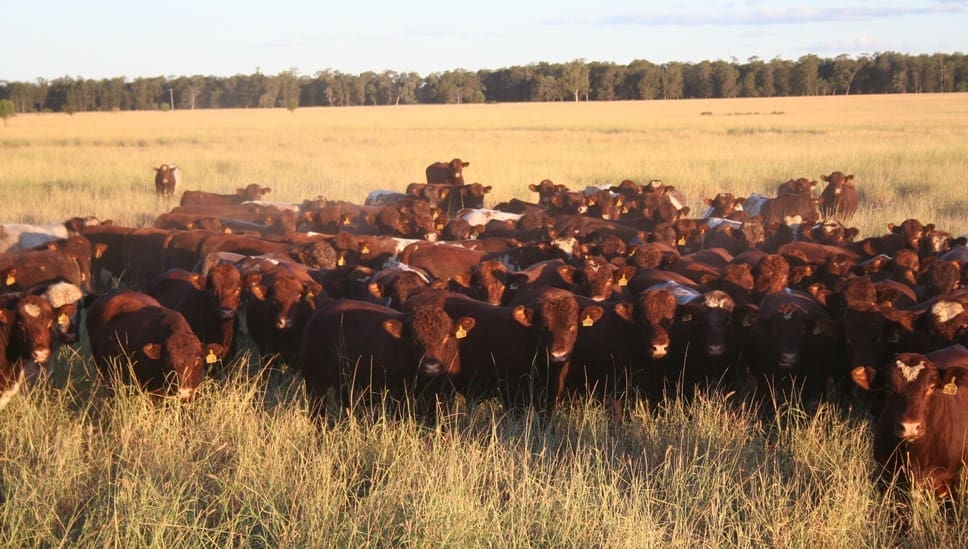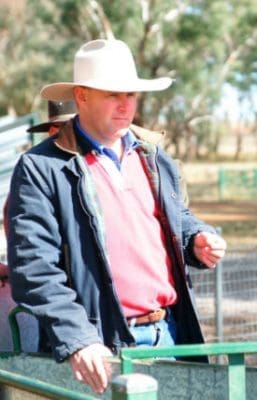
THE uptake of genomic information in cattle breeding is rapidly gathering pace, as more breeders seek to understand their cattle and identify superior genetic lines.
The uptake within Australia has seen the inclusion of single step within Breedplan, while for the Shorthorn breed, the opportunity to access an international genetic database has led to the development of ShorGene underpinned by IGS.
The move by Shorthorn Beef to use the IGS system, instead of Breedplan, was announced earlier this year.
Shorthorn breed development officer Graham Winnell told Beef Central earlier this year that the move towards IGS was important as both the US and Canadian Shorthorn breeds subscribed to the IGS program.
“Adoption of IGS would allow us to put the US, Canadian and Australian Shorthorn populations in a single analysis on one database – all reporting the same Expected Progeny Differences*.” (*EPDs are similar to Australian Breedplan’s Estimated Breeding Values).
“As a breed of moderate size in Australia, such a move would greatly change our metrics,” Mr Winnell said.
Since publication of the original article in February, one leading Shorthorn breeder has moved to have the stud’s entire herd gnomically profiled. Marellan Shorthorns made the decision to complete testing of its herd for a number of reasons.
Stud principal Lincoln Job described the decision as a choice to learn more about his cattle and to accelerate genetic progress, both within his herd and for his clients’ herds.
“We wanted to learn more about our cattle, and we also wanted to be at the forefront of DNA technology,” he said.
Following the decision to profile the herd, Marellan will become the first Australian seedstock operation to offer bulls with DNA-enhanced Breeding Values. The impact of herd profiling has seen the accuracies of some animals improve across the herd.
Although the move to the new system offers a greater chance for comparison of animals across the international Shorthorn breed, at a sale level there will be some new challenges for bull buyer producers as they work through the catalogue.
Genomic information presented differently
One of the biggest changes will be to see genomic information presented as an EPD (Expected Progeny Difference). In practical terms this will mean many of the traits will be expressed in Imperial measurements (pounds and square inches) rather than the more familiar metric measurements.
Lincoln Job recognises that producers may be uncertain about the presentation of the EPDs. He explained the information on each bull does contain the profiled traits and these have been ranked into percentage bands.
“The rank percentage describes the position of the particular EPD relative to the Shorthorn Beef population,” he said.
“For people looking to buy bulls, the percentages are going to be very useful to see where traits are and to choose animals best suited to their program.”
The undertaking to profile the entire herd has not been a small task. However Lincoln describes it as a part of the breeding program, but that it was really about adding to the breeding ‘toolbox’, rather than giving all the answers.
“There’s just so much we don’t know yet. We see great benefit in having DNA profiles on our whole herd. Going forward, every animal including culls, will have a DNA tissue sample taken at weaning. This will confirm parenting, add to the accuracies of our performance recording and help to identify superior individuals, speeding up genetic progress in our herd.”
While committed to continuing to use DNA profiling, including samples on agistment cattle, there is strong recognition of the ongoing importance of physical suitability and selection on phenotype within the Marellan herd. As a long-term vision, Lincoln says he hopes that to identify genes relating to lower tick burdens, grassfed marbling and northern survivability.
As the first bulls with this data go under the hammer, it is likely that there will be strong interest from producers both within the Shorthorn breed and from other breeds keen to see how commercial producers respond to the information now on offer.

Alastair Rayner
Alastair Rayner is the Principal of RaynerAg, an agricultural advisory service based in NSW. He regularly attends bull sales to support client purchases and undertakes pre sale selections and classifications. He can be contacted here or through his website www.raynerag.com.au

Dear Al
The statement “Following the decision to profile the herd, Marellan will become the first Australian seedstock operation to offer bulls with DNA-enhanced Breeding Values. The impact of herd profiling has seen the accuracies of some animals improve across the herd” is not correct.
The Brahman, Hereford, Wagyu and Angus breeds have all been using full multi-trait single-step BREEDPLAN for some time with the first of the breeds transitioning in mid-2017.
Accordingly, all breeders in those 4 breeds have been receiving EBVs that draw on DNA information via single-step since that implementation.
Prior to the implementation of single-step, since 2011 breeders in Angus and Brahman who submitted genotypes were receiving DNA-enhanced breeding values for a number of traits, through an earlier method of including DNA information in EBVs (the method is known as blending).
Robert Banks
Director, AGBU
Can you really justify the statement, ‘Marellan will become the first Australian seedstock operation to offer bulls with DNA-enhanced Breeding Values.’ Maybe the first Australian Shorthorn seedstock breeder?
The first seedstock producer to provide genomically enhanced EBVs in a commercial sale in Australia was Raff Angus in 2012.
They genotyped every one of their bulls for sale with a 50K panel.
David and Andrew did it to add value to their customers when genomics wasn’t popular back then!
True visionaries of our industry.
I am an avid follower of Beef Central and its associate publications but I find it necessary to complain at the lack of research in this article. In 2018 Bonnydale Black Simmentals genomically profiled its entire stud herd with the American Simmental Association (ASA) utilising IGS and has continued to genomically profile every calf since. In February 2018 we provided potential buyers, on sale day, with Genomically Enhanced EPD’s (Estimated Progeny Difference) via ASA, the first seed-stock operation in Australia to do so. In 2019 we published Genomically Enhanced EPD’s in our February annual bull sale catalogue. With the presentation of GE EPD’s and offering 12 to 13 month old bulls we have enabled our clients to secure superior genetics a lot earlier than would normally be possible. While we have led the Simmental breed in this area it was only possible by registering our herd with ASA while still maintaining our primary registry with Simmental Australia. This course of action, while doubling our registration cost, was necessary if we were serious about delivering superior genetics that had high accuracy breeding values for our clients to consider. Each animal in the herd is also DNA parent verified. In 2020 all bulls offered for sale will be DNA parent verified and have GE EPD’s as will 500 stud females which will begin calving in mid January 2020.
Mike Introvigne
Bonnydale Black Simmentals
Bridgetown WA
Excellent. We would not use a bull in our herd until he has been at least DNA sire verified (preferably parent) and tested for all known genetic diseases/conditions. Angus have Genomics which alters Breedplan EBV’s in line with those animals in its pedigree it has inherited. The adjustment is immediate rather than having to analyse progeny. Has huge financial benefits.